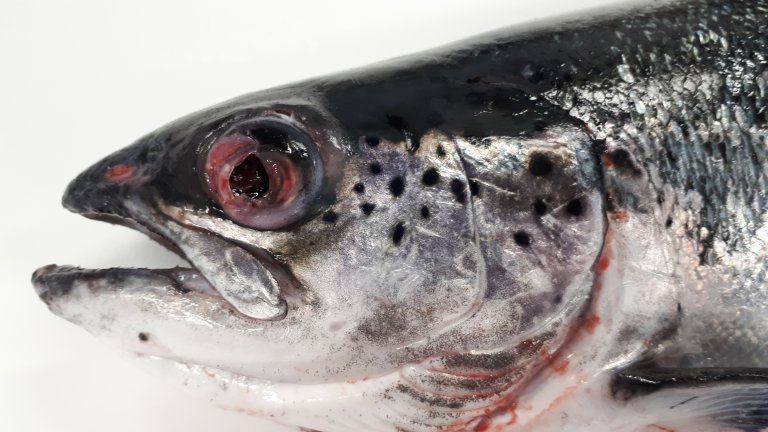
Pathogen and Transmission
Phocoenobacter atlanticus (a bacteria with formerly working name Pasteurella atlantica) belongs to the genus Phocoenobacter which consists of short, gram-negative rod-shaped bacteria. So far, disease has been observed in farmed Atlantic salmon and lumpfish. The routes of transmission and environmental survival are unknown, but outbreaks at nearby sites suggest horizontal transmission. The Phocoenobacterspecies that cause disease in fish are currently not considered a threat to human health.
Occurrence
Pasteurellosis in salmon was first detected in Northern Norway in 1989, and since then has occurred intermittently in both northern and southern regions of the country. Since 2018, there has been a steadily increasing occurrence along the Norwegian coast, from Rogaland in the south to Møre og Romsdal in the north.
Outside of Norway, the disease has been reported in Scotland since the 1990s, with occasional outbreaks. In 2017, an outbreak with high mortality occurred on the Isle of Lewis, and multiple outbreaks were reported in Scotland in 2019.
Pasteurellosis is also a serious disease in farmed lumpfish in Norway, the Faroe Islands, and the United Kingdom.
The term pasteurellosis is also used for bacterial infections caused by Photobacterium damselae subsp. piscicida (formerly Pasteurella piscicida) in warm-water species such as sea bass.
Clinical Signs
A characteristic clinical sign in salmon with advanced infection is severe inflammation of the eye and eye socket, which gave the disease its Norwegian Sami name Varraccalbmi (“blood eye”) (Valheim et al. 2000). In more recent outbreaks, bloody abscesses in skeletal and cardiac muscle, along with internal organ haemorrhaging, have been typical. Inflammation of the pericardium, abdominal wall, pseudobranchs, and base of the pectoral fins are common findings. Histopathological changes reflect the gross pathology, showing abundant inflammatory cells, tissue necrosis, and short rod-shaped bacteria in affected organs.
In lumpfish, white areas around the eyes and haemorrhages in the skin are typical. Tissue sections often reveal bacterial aggregates in internal organs.
Diagnosis
At the Norwegian Veterinary Institute, diagnosis is based on case history, pathological, and microbiological investigations. The diagnosis is confirmed by culturing and identifying the bacterium, which grows with small grey colonies after 2-4 days on blood agar with 2% NaCl. Slightly alpha-haemolysis is seen after several days. Identity confirmation is based on phenotypic characteristics, identification using mass spectrometry (MALDI-TOF MS) and/or DNA sequencing.
Control Measures
Pasteurellosis is not notifiable at the time being.
No commercial vaccines are available, but autogenous vaccines are commonly used in affected areas on the west coast of Norway. The protective effect of these vaccines has not been documented.. There are still gaps in knowledge regarding transmission routes and reservoirs. General hygienic precautions, such as disinfection of equipment and personnel, may serve as prudent preventive measures. The disease often appears late in the production cycle, and harvest may be considered.
To clarify the relationship between various Pasteurella species/variants detected in Norwegian aquaculture, over 80 Pasteurella isolates from Norway and Scotland were whole genome sequenced by the Norwegian Veterinary Institute in 2020. This included Norwegian and Scottish salmon and lumpfish isolates from the 1990s through 2020. The study identified one group of closely related isolates (distinct from P. skyensis) as the main cause of pasteurellosis in Norwegian salmon. The working name “Pasteurella atlantica genomovar salmonicida” has been used for this group, but in 2025 the name Phocoenobacter atlanticus subsp atlanticus was recognized for this group (Nilsen et al. 2025).
Additionally, with two exceptions (where lumpfish were cohabitating with infected salmon), a different variant, regardless of geographic origin, was consistently associated with disease in lumpfish. The working name “Pasteurella atlantica genomovar cyclopteri has been used for this group, but in 2025 the name Phocoenobacter atlanticus subsp. cyclopteri was recognized for this group (Nilsen et al. 2025).
